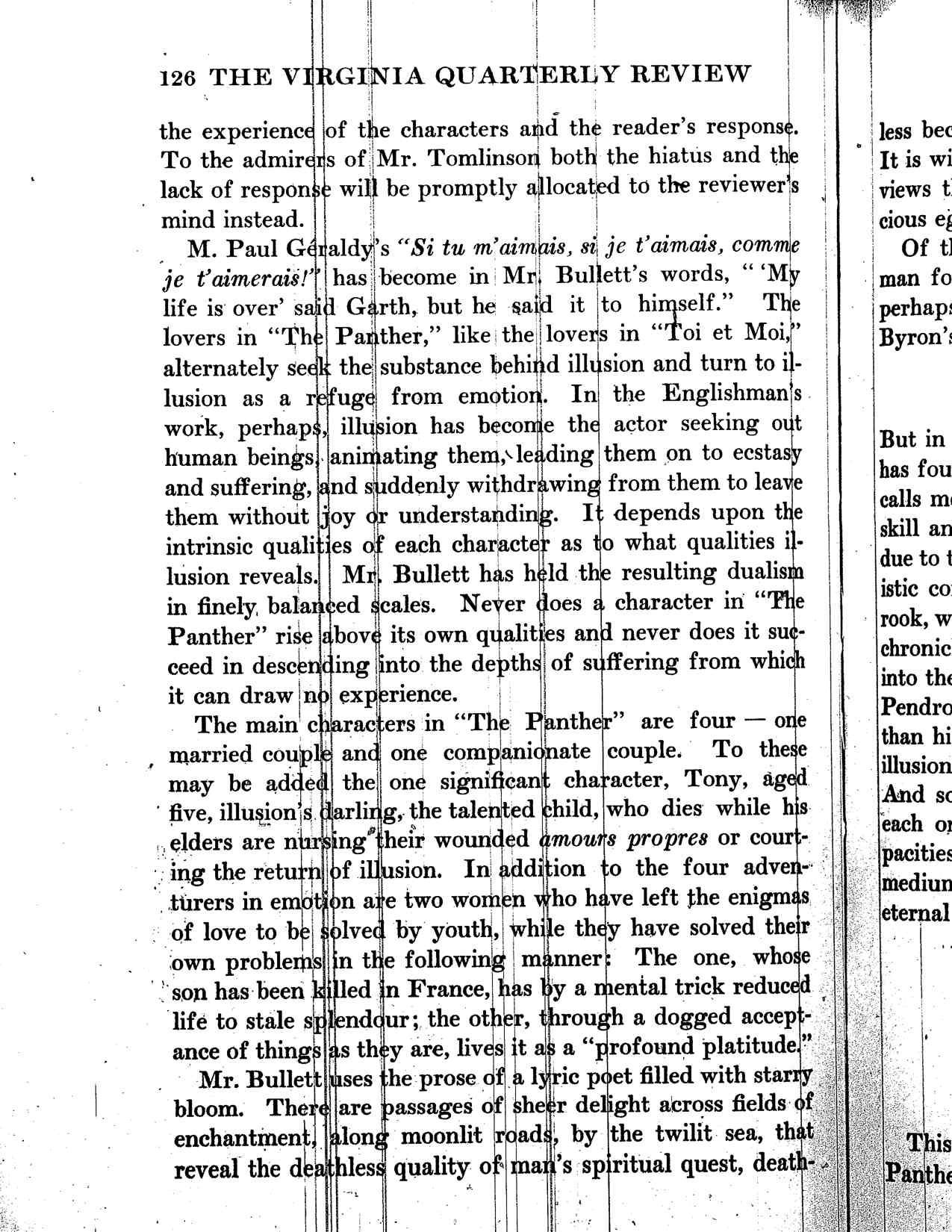
[new page]
the experience of the characters and the readerŌĆÖs response.
To the admirers of Mr. Tomlinson both the hiatus and the
lack of response will be promptly allocated to the reviewerŌĆÖs
mind instead.
M. Paul G├®raldyŌĆÖs ŌĆ£Si tu mŌĆÖaimais, si je tŌĆÖaimais, comme
je tŌĆÖaimerais!ŌĆØ has become in Mr. BullettŌĆÖs words, ŌĆ£ŌĆśMy
life is overŌĆÖ said Garth, but he said it to himself.ŌĆØ The
lovers in ŌĆ£The Panther,ŌĆØ like the lovers in ŌĆ£Toi et Moi,ŌĆØ
alternately seek the substance behind illusion and turn to illusion
as a refuge from emotion. In the EnglishmanŌĆÖs
work, perhaps, illusion has become the actor seeking out
human beings, animating them, leading them on to ecstasy
and suffering, and suddenly withdrawing from them to leave
them without joy or understanding. It depends upon the
intrinsic qualities of each character as to what qualities illusion
reveals. Mr. Bullett has held the resulting dualism
in finely balanced scales. Never does a character in ŌĆ£The
PantherŌĆØ rise above its own qualities and never does it succeed
in descending into the depths of suffering from which
it can draw no experience.
The main characters in ŌĆ£The PantherŌĆØ are fourŌĆöone
married couple and one companionate couple. To these
may be added the one significant character, Tony, aged
five, illusionŌĆÖs darling, the talented child, who dies while his
elders are nursing their wounded amours propres or courting
the return of illusion. In addition to the four adventurers
in emotion are two women who have left the enigmas
of love to be solved by youth, while they have solved their
own problems in the following manner: The one, whose
son has been killed in France, has by a mental trick reduced
life to stale splendour; the other, through a dogged acceptance
of things as they are, lives it as a ŌĆ£profound platitude.ŌĆØ
Mr. Bullett uses the prose of a lyric poet filled with starry
bloom. There are passages of sheer delight across fields of
enchantment, along moonlit roads, by the twilit sea, that
reveal the deathless quality of manŌĆÖs spiritual quest, deathless.






